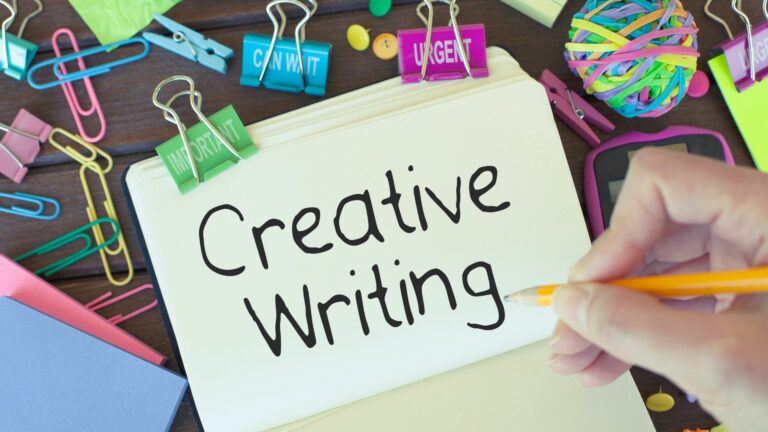An effective freelance writing proposal is key to securing new projects and clients. It’s more than detailing your qualifications or past work; it’s about aligning your offerings with your potential clients’ unique demands and goals. A well-crafted proposal demonstrates your understanding of the project, showcases your skills, and proposes a clear plan of action that instills confidence in your client.
Improving your proposals involves refining various elements, from the structure and clarity of your writing to the strategies for persuasion and professionalism within your pitch. Each aspect of the proposal plays a crucial role. From addressing the client’s needs to presenting a compelling narrative, the goal is to engage and convince the client that you are the best fit for the job.
Key Takeaways
- A tailored approach addressing specific client needs improves proposal effectiveness.
- Key elements should be optimized, including clear structure and persuasive content.
- Maintaining professionalism throughout the proposal enhances credibility.
Understanding Client Needs
Before crafting a proposal, writers must thoroughly comprehend the client’s needs and the project’s scope. In-depth research into the client’s industry is crucial.
Identifying the Project Scope
- Review the project description meticulously to capture all nuances.
- Establish key deliverables by asking:
- What are the specific outcomes the client expects?
- Are there any milestones or deadlines mentioned?
Researching the Client and Industry
- Analyze the client’s online presence and previous projects to understand their brand voice and audience.
- Focusing on the industry means:
- Examining competitors and market trends.
- Keeping abreast of industry terminology and the latest news.
Crafting a Winning Proposal
A winning proposal articulates the services one offers and demonstrates why they are uniquely qualified to meet the client’s needs. Such a document requires attention to structure, distinct value proposition, credible experience, and clear deliverables.
Structuring Your Proposal
The structure of a proposal ensures that the client can follow the writer’s line of thought. It generally consists of an introduction, body, and conclusion:
- Introduction: Briefly introduce the purpose of the proposal.
- Body: Include subsections such as services offered, methodology, and pricing.
- Conclusion: Summarize the value delivered and call to action.
Highlighting Your Unique Value Proposition
A freelancer’s value proposition should clearly articulate the following:
- Tailored Services: How their services are specifically aligned with the client’s needs.
- Competitive Edge: How their approach or skills outperform those of the competition.
Including a competitive analysis or a detailed explanation of benefits can enhance this section.
Demonstrating Experience and Credibility
Establishing credibility involves:
- Portfolio Showcase: Samples highlighting the writer’s previous work and outcomes.
- Testimonials and Social Proof: Incorporating client testimonials or case studies that testify to the writer’s expertise and successful track record.
Presenting a Clear Timeline and Deliverables
Timelines and deliverables clarify expectations. They should detail:
- Projected Milestones: When each phase of the project will be completed.
- Deliverables List: A concise list of what will be delivered upon project completion.
Using a table to list these items can be an effective way to present this information.
Optimizing Proposal Elements
To stand out as a freelancer, one must refine each proposal component to communicate value effectively. Focusing on personalization, clarity, and aesthetic appeal can significantly enhance the proposal’s impact.
Personalizing the Cover Letter
A tailored cover letter can establish an immediate connection with the potential client. It demonstrates that the freelancer understands the client’s needs and demonstrates their ability to address them. For instance, mentioning the client’s recent project or company milestone can evoke personal investment and differentiate the proposal from generic submissions.
Effective Communication
Effective communication is vital in conveying the freelancer’s understanding of the project’s scope and goals. A clear, concise message that outlines project milestones and deliverables reassures clients of the freelancer’s organization and foresight. Moreover, including a strong call to action for the next steps can guide the client through decision-making and imply professionalism.
Design and Format
The design and format of the proposal are crucial for making a lasting impression. A visually organized proposal template that aligns with the freelancer’s brand encourages readability and reflects their creativity and attention to detail. Elements such as bullet points, bold headers, and consistent style give the document a polished look while facilitating the extraction of key information by the client.
Enhancing Professionalism and Persuasion
The success of freelance writing proposals hinges on a delicate balance of professionalism and the ability to persuade. The following strategies are designed to optimize both aspects, thereby increasing the potential for client engagement and successful project acquisition.
Setting Competitive Rates
- Market Research: They should conduct thorough market research to determine competitive pricing within their expertise.
- Value Proposition: Freelancers must clearly articulate the value they bring, justifying their rates with their quality of work and experience.
Addressing Potential Objections
- Anticipate Concerns: A freelancer should identify and address potential objections within the proposal before a client raises them.
- Solution-Oriented Responses: They must provide evidence-based responses that present their skills as the solution to the client’s needs.
Including Client Testimonials and Social Proof
- Credible Testimonials: Incorporate positive feedback from previous clients to build trust and demonstrate commitment to quality.
- Relevant Successes: Examples of successful past work relevant to the prospective project can be social proof of their expertise and ability to deliver results.
Finalizing with Clear Terms and Actionable Next Steps
- Definitive Terms and Conditions: They should outline the terms of engagement, ensuring clarity on deliverables, timelines, and payment structures.
- Call to Action: The proposal should end with a clear next step, encouraging immediate follow-up or a signature to seal the agreement, and include accurate contact information for easy communication.
Frequently Asked Questions
Crafting a powerful proposal is essential in securing freelance writing gigs. These FAQs address the core components and common pitfalls to avoid in proposal writing.
What elements should be included in a successful freelance writing proposal?
A successful freelance writing proposal should consist of a clear scope of services, a breakdown of costs, and a timeline for delivery. Additionally, it should articulate the value proposition and how the writer’s expertise aligns with the project’s needs. Identifying client goals and providing tailored solutions are also crucial.
How can one tailor a proposal to stand out to potential clients?
One can tailor a proposal to stand out by thoroughly understanding the client’s industry and specific needs. Reference past projects that showcase relevant experience and success. Personalizing the proposal with insights into the client’s company can demonstrate dedication and the ability to deliver targeted results.
What strategies lead to an engaging and persuasive freelance proposal?
To make a proposal engaging and persuasive, writers should start with a compelling introduction that highlights their unique qualifications. Using persuasive writing techniques such as social proof, authoritative statements, clear benefits, and a confident tone can further captivate the client’s interest.
Which common errors should writers avoid when drafting their proposals?
Writers should avoid generic language, failing to proofread, and overlooking the importance of a well-structured layout. It is also important to avoid overpromising or being vague about deliverables. They should be precise about what they can deliver and by when.
In what ways can writers effectively showcase their skills within a proposal?
Writers can showcase their skills by including succinct samples of previous work that align with the prospective project. Outlining how their specific skill set will address the client’s pain points can help to cement their value. Highlighting any awards, recognition, or industry endorsements can also boost credibility.
How does one concisely convey the value of their writing services in a proposal?
To convey the value of writing services, one should focus on the outcomes their work will deliver, such as increased traffic, engagement, or conversions. Presenting a brief case study or statistical data that shows past successes can be an effective method to underscore their potential impact on the client’s project.





